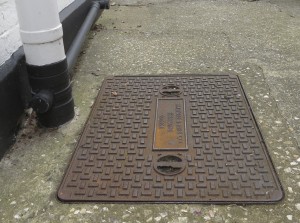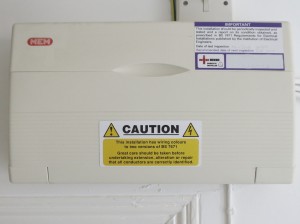10 home buying inspection tips
A thorough home buying inspection is an essential step in the process of buying a new home. I tend to do quite a number every year, for friends or family, and below are a selection of my best tips for assessing a potential new house. Before exploring the list below, there are a few general rules for that first visit; remember to make notes, take a tape measure, ask questions, and above all take your time. You’ll clearly have at least one more viewing if you think you’ve found the house of your dreams, but the weight of information you find out in the first home inspection, normally becomes the biggest influence on your final decision.
1. Roof
Always have a good look at the roof. See if there is any bowing, tiles missing, or generally has the look of never being touched in fifty years. Check if the guttering appears to be working; giveaways here apart from seeing obvious drips, are staining on wall surfaces. Remember to check around the back as well! If there is a chimney, check it looks in good condition, is not leaning, and the flashing around it is sound.
2. Drains

Soil pipe with drain cover right next to it. Just what I like to see!
Work out where all the different drains may be running. Yes, that is easier than it sounds, but basically take note of where toilet soil pipes (the large waste pipe that toilets empty into) disappear at ground level, and where drain covers are located.
If you can’t find any drain covers, you need to, so ask. In some cases, extensions get built over them (really, not a good idea), or if the covers are really old, or broken, make sure you lift them to see what condition the actual inspection chambers are in. In a rural area, also check that you are on mains drainage or whether you have a septic tank that’ll need periodic pumping out.
3. Cracks
Any cracks should be investigated, but clearly the bigger ones may be a bigger concern. For example, horizontal cracks in exterior walls could mean problems with wall ties, cracked lintels could mean a bit of subsidence, but some cracks may just be a bit of wear and tear or settlement, and nothing to worry about. Basically take notice of them all, and make sure that you mention them to your surveyor (see lower down).
4. Loft
Always, always, make sure you have a look in the loft. If there’s no ladder, make sure you bring one on a second visit (and torch). You can then have a look at the general condition of the roof from the inside. You can see whether it has been felted, if there are any leaks, if it has been insulated correctly, and if there are any obvious signs of woodworm etc.
5. Damp
Damp is normally fairly easy to spot (and smell), and so check every room for patches on walls, and especially all around the base of every wall at ground level. Flaking paint, discoloured paint, and rotting skirting boards are all obvious signs, but be aware that sometimes, these things may have been ‘covered up’ by a bit of hasty redecoration. Any single walls that have been newly painted, or single lengths of skirting that don’t match the rest, can always be a bit suspicious. Any mould about the house is never a good sign, but could just mean bad ventilation. For example, bathrooms and toilets may have a bit of mould that could easily be cured by better ventilation. However, mould in living rooms for example, can often be more concerning.
6. Boiler and heating
Check the boiler to see firstly how old it is and secondly whether it has been regularly serviced. An older boiler, may mean updating will soon be required, but as long as it has been regularly serviced, it could still be fine for many years to come. Be clear on what sort of heating system you have. If it’s gas or oil, you’ll generally have panel radiators of some nature, so check for signs of leaking valves, ancient pipework, rust around any joints, and so anything that suggests some upgrading or replacement is seriously required. If the heating is electric, again, consider whether the radiators have seen better days, and whether you’re going to need to invest in a new system.
7. Consumer unit and electrics

Always good to see a modern consumer unit rather than a more ancient fuse box.
If there is an old fashioned fuse box, you really should be thinking that it will need replacing in the not too distant future. For me, a modern consumer unit is a must, as although it is an investment, it does provide a lot more peace of mind.
Also look out for ancient light fittings and old wires supplying light fittings, as well as old style switch and socket plates. ‘Old’ wiring may still be fine, but you need to get it checked, and/or find out the last time it was checked by a qualified electrician.
8. Floors
Any cracks in concrete or tiled floors need to be flagged up on your list, and with suspended wooden floors (floor that contain wooden joists), you should do a bit of a ‘bounce’ check. Remember this doesn’t just mean in upstairs rooms as you may have suspended wooden floors downstairs. Excessive movement could suggest either undersized joists for the span, or that joist ends may be rotting or decaying.
9. Outside space
Gardens, parking areas and outside space requirements will always be a variable requirement according to personal priorities, and obviously flat buyers will be limited on options here. Now, I’m not an estate agent (phew), but I always advise that having an outside relaxation area, and off-road parking are hugely important factors. I know it all comes down to budget, and indeed whether you own a car, but in terms of resale, I put these items high on my list of recommendations.
10. Survey
Even if your builder mate has had a ‘look’, or everything seems perfect, and you want to proceed to purchase, always, always get a survey done, and make sure you raise all your concerns with the surveyor, in detail. Don’t be shy, they’ll certainly be charging you for their trouble, and never consider any question to be ‘too stupid’. Get the most definitive answers you possibly can, and never think ‘I’m sure that will be okay….’ without making sure it will be okay. If a potential seller is slow coming forward with answers to questions, or any relevant paperwork, don’t give in – make sure you get the answers you require.
Above is my top 10, but there are many other items to consider, such as new windows, new kitchens, new bathrooms and the state of the decoration, but with all such items it is fairly straightforward to identify what will ‘need’ to be done. You also must consider the basics such as the age of the house, as clearly older houses will have the potential for more updating requirements and if the house is listed, any renovation ideas you may have will be much more difficult (and generally more expensive) to carry out. Finally, enjoy the process, but always try and remain objective, as it is so easy to get carried away in the excitement of buying a new home. Happy house hunting!
